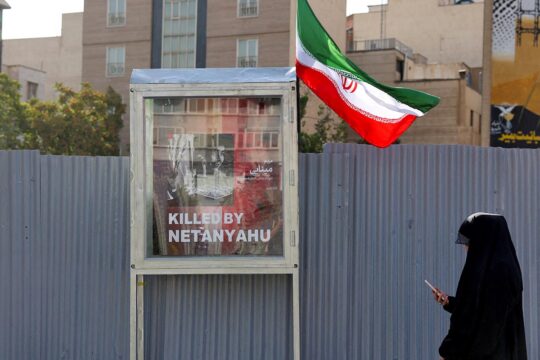After seven years behind bars, former Bosnian Serb leader Radovan Karadzic will finally learn next month whether judges have found him guilty of some of Europe's worst atrocities since World War II.
He will be the highest level official to be judged for crimes committed during the Balkan wars, after Slobodan Milosevic, the late Serbian president, died in 2006 while on trial.
Once one of the continent's most wanted men, Karadzic evaded capture for 13 years after being indicted for genocide, war crimes and crimes against humanity in the brutal ravages of the break-up of Yugoslavia in 1991.
Despite being a master of disguise, Karadzic was finally tracked down and arrested on a Belgrade bus in July 2008, pretending to be a New Age healer and practitioner of alternative medicine called Dragan Dabic.
Now on March 24, the International Criminal Tribunal for the former Yugoslavia (ICTY) will hand down a verdict after his marathon trial which opened in October 2009, presiding judge O-Gon Kwon said.
The complex trial was beset by delays due to Karadzic's ill-health and dragged on as it heard from more than 585 witnesses called for both sides.
But since closing arguments wrapped up in October 2014, Karadzic has been waiting in his detention cell in The Hague as judges have taken their time considering the verdict.
His recognisable shock of once-grey hair has over the years turned white, and he has spent his time firing off letters to the court and world leaders pressing his case.
Karadzic, 70, is notably accused of genocide for his alleged role in the Srebrenica massacre. He has insisted he will be acquitted by the court, saying he was "a friend to the Muslims."
He also faces charges related to the sniping and shelling committed during the 44-month-long siege of the Bosnian capital Sarajevo, which ended in November 1995 by which time 10,000 people had died.
To Bosnian Croats and Muslims against whom he waged a campaign of what became known as "ethnic cleansing", Karadzic is a monstrous megalomaniac responsible for the deaths of tens of thousands of people.
- 'Evil man' -
Almost 8,000 Muslim men and boys were slaughtered and their bodies dumped in mass graves after Bosnian Serb forces overran the UN-protected enclave of Srebrenica in eastern Bosnia in July 1995.
"I hope that he will be sentenced to life imprisonment," said Munira Subasic, the head of the Mothers of Srebrenica organisation.
"We've waited a long time, but it's important that Karadzic is still alive and that a verdict can be delivered," she told AFP, adding others would realise that "crime is not the right path."
But for many Serbs, Karadzic was a hero of the 1992-1995 war that followed Bosnia's independence from the Yugoslav federation, a man who stood up to age-old enemies and great powers.
He became a familiar sight to worldwide audiences in the 1990s when his contempt for diplomacy and his cynical manipulation of UN peace efforts exasperated foreign negotiators.
The late American diplomat, Richard Holbrooke, a chief architect of the 1995 Dayton peace accords that ended the war in Bosnia, described Karadzic as "one of the worst, most evil men in the world".
"He believed in racial superiority... He would have made a good Nazi," Holbrooke told German magazine Spiegel after Karadzic's arrest.
Karadzic, president of the former self-proclaimed Bosnian Serb republic, failed to plead at the start of his marathon trial so a "not guilty" plea was entered on his behalf.
Despite claiming his innocence, Karadzic did apologise to victims of the crimes, accepting responsibility as the serving president of the territory at the time.
Prosecutors have said life behind bars "would be the only appropriate sentence".
Karadzic, along Milosevic and Bosnian Serb general Ratko Mladic, acted together to "cleanse" Bosnia's Muslims and Croats from Serb-claimed territories after the collapse of Yugoslavia, the prosecution has claimed.
Mladic went on trial in May 2012, and a verdict is not expected until 2017.


